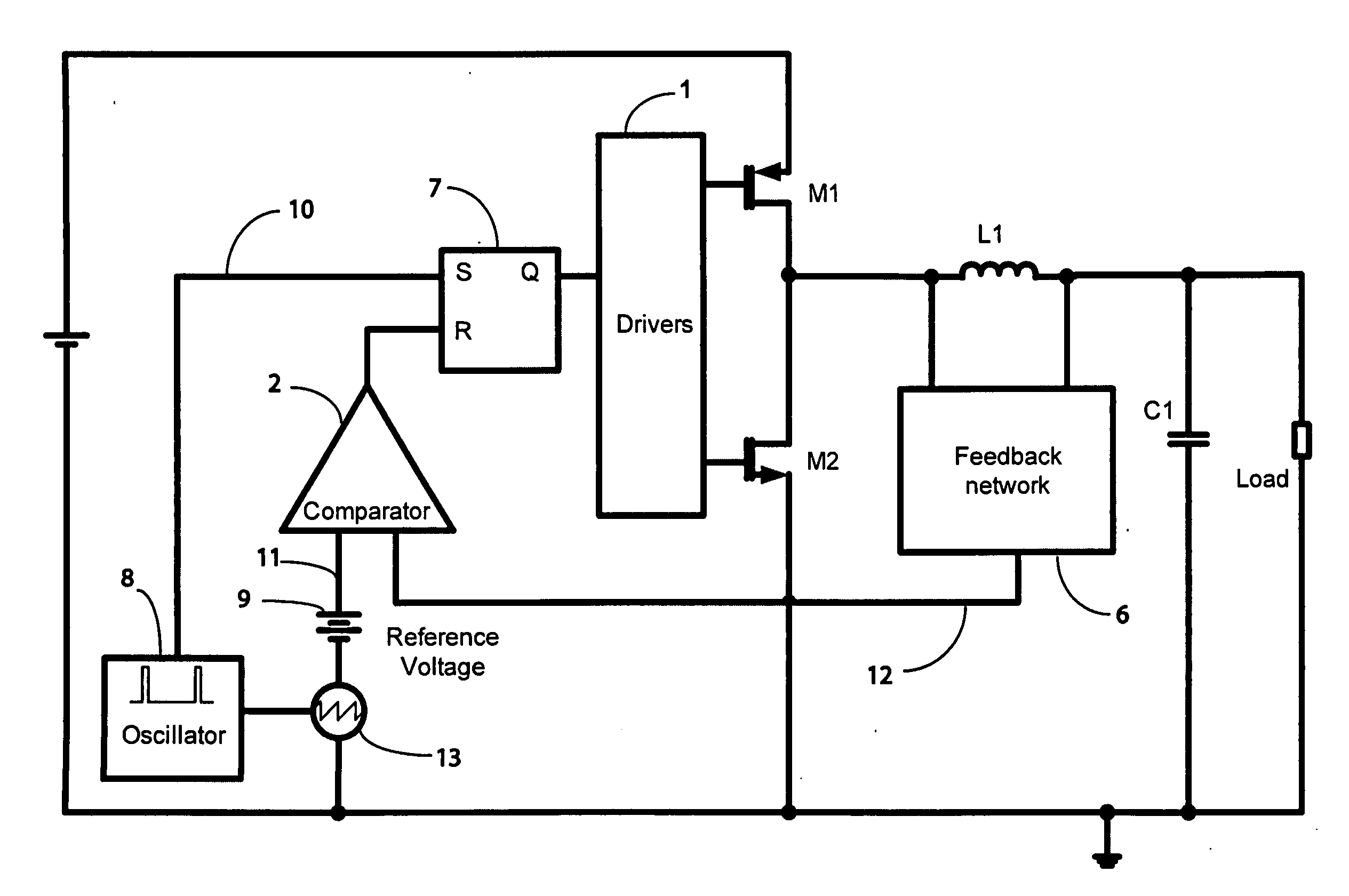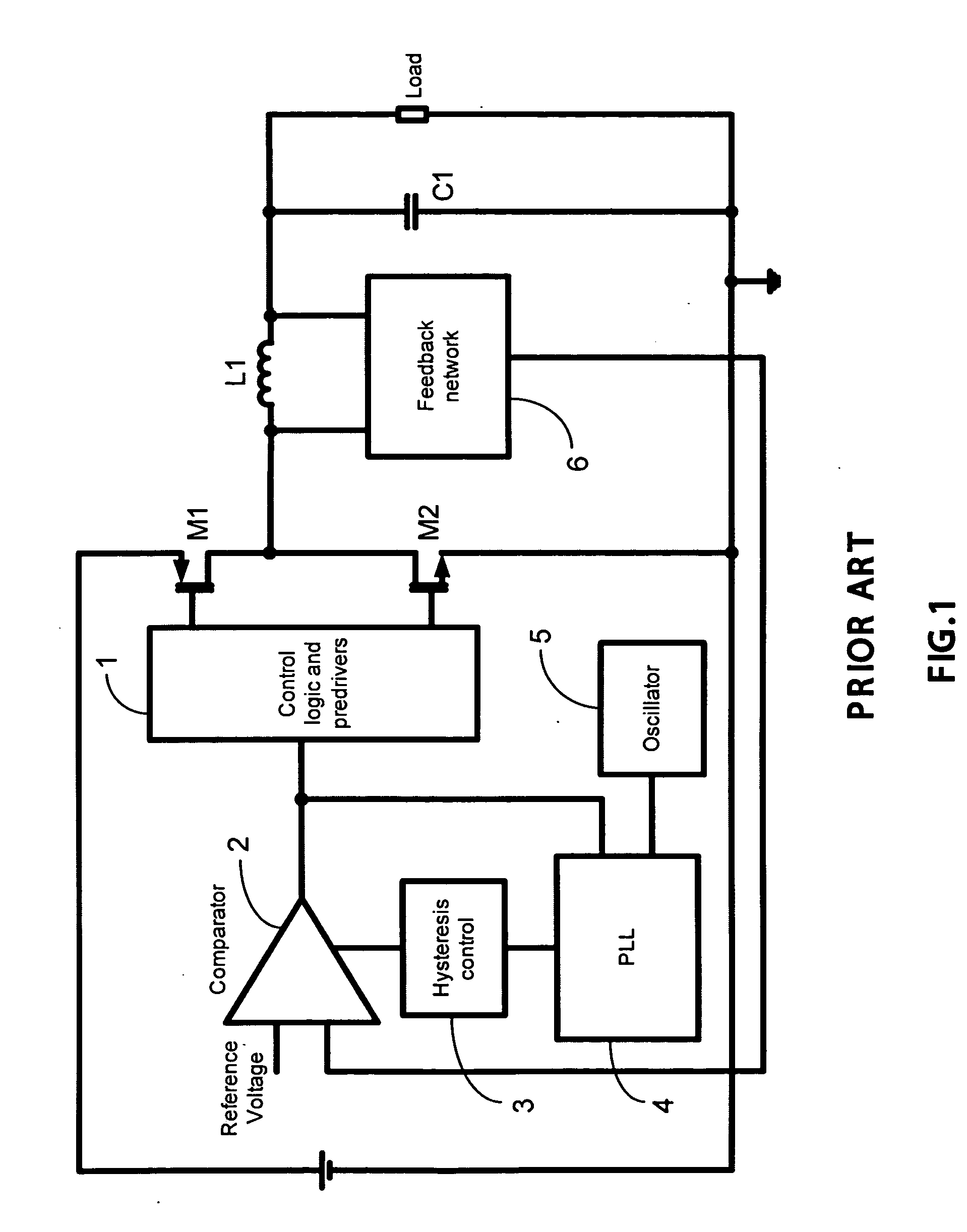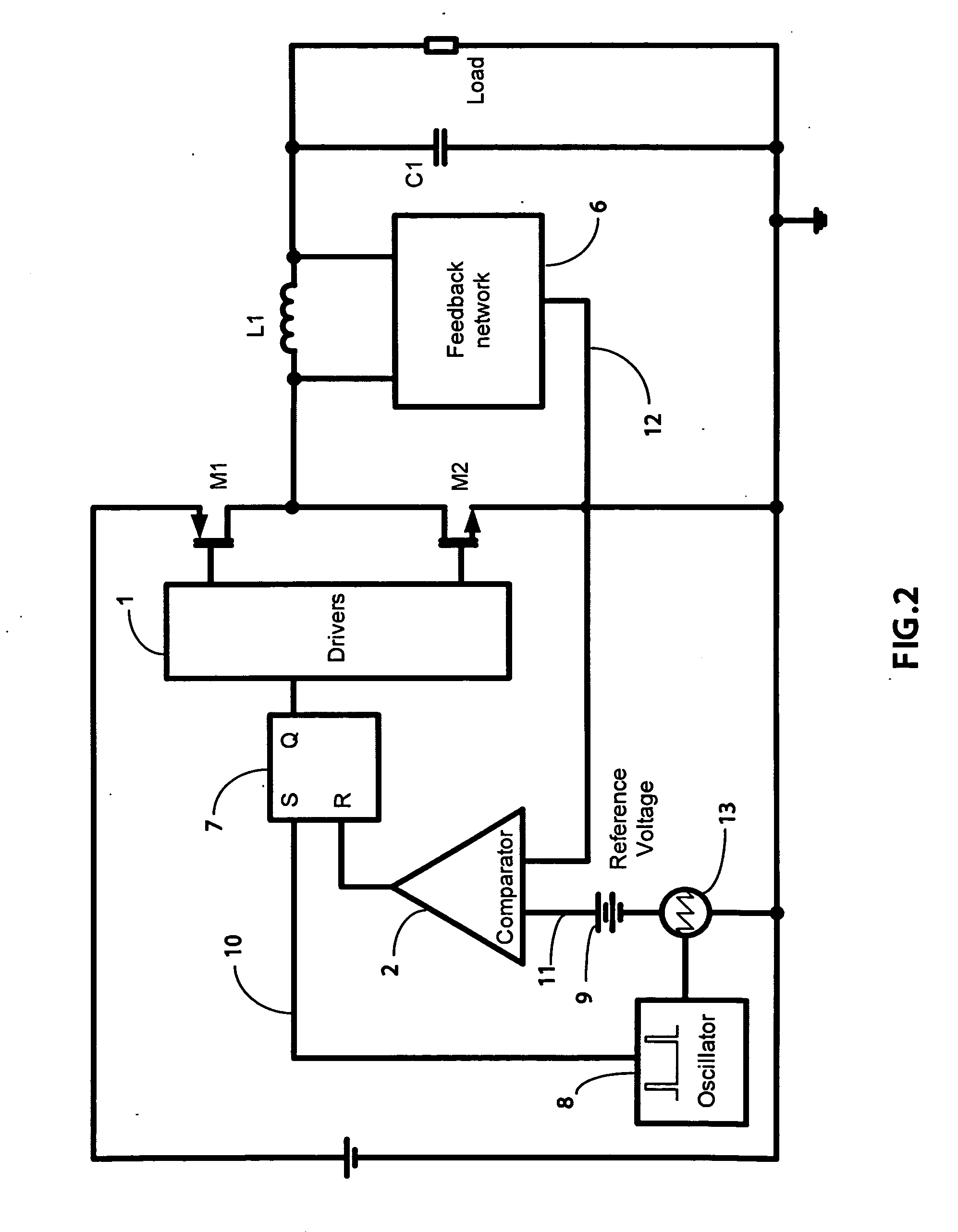Constant frequency synthetic ripple power converter
a power converter and constant frequency technology, applied in the field of power converters, can solve the problems of jitter or phase noise of switching, the most difficult transition, and the circuit is often affected, and achieve the effect of converting from dcm mode into ccm very quickly
- Summary
- Abstract
- Description
- Claims
- Application Information
AI Technical Summary
Benefits of technology
Problems solved by technology
Method used
Image
Examples
Embodiment Construction
[0077]A FIG. 2
[0078]FIG. 2 shows the block diagram of the power converter according to the preferred embodiment of the present invention for a buck converter. The oscillator 8 generates a clock signal with a very small duty cycle to generate the ramp signal 13 and to synchronize the converter with the minimum off-time. The clock signal could also be generated externally to the power converter integrated circuit to synchronize the system to any desired frequency. The ramp signal generator 13 generates the saw tooth waveform (but it could as well generate a different shape ramp signal) synchronized to the clock signal 10. The ramp signal is in series to a reference voltage 9 (typically a bandgap reference voltage or any other DC voltage).
[0079]The resulting signal 11 feeds the comparator 2 that compares it with the synthetic ripple signal 12 coming from the feedback network 6. The feedback network 6 has the task to generate a ripple signal of the right amplitude and of the right bandw...
PUM
 Login to View More
Login to View More Abstract
Description
Claims
Application Information
 Login to View More
Login to View More - R&D
- Intellectual Property
- Life Sciences
- Materials
- Tech Scout
- Unparalleled Data Quality
- Higher Quality Content
- 60% Fewer Hallucinations
Browse by: Latest US Patents, China's latest patents, Technical Efficacy Thesaurus, Application Domain, Technology Topic, Popular Technical Reports.
© 2025 PatSnap. All rights reserved.Legal|Privacy policy|Modern Slavery Act Transparency Statement|Sitemap|About US| Contact US: help@patsnap.com



